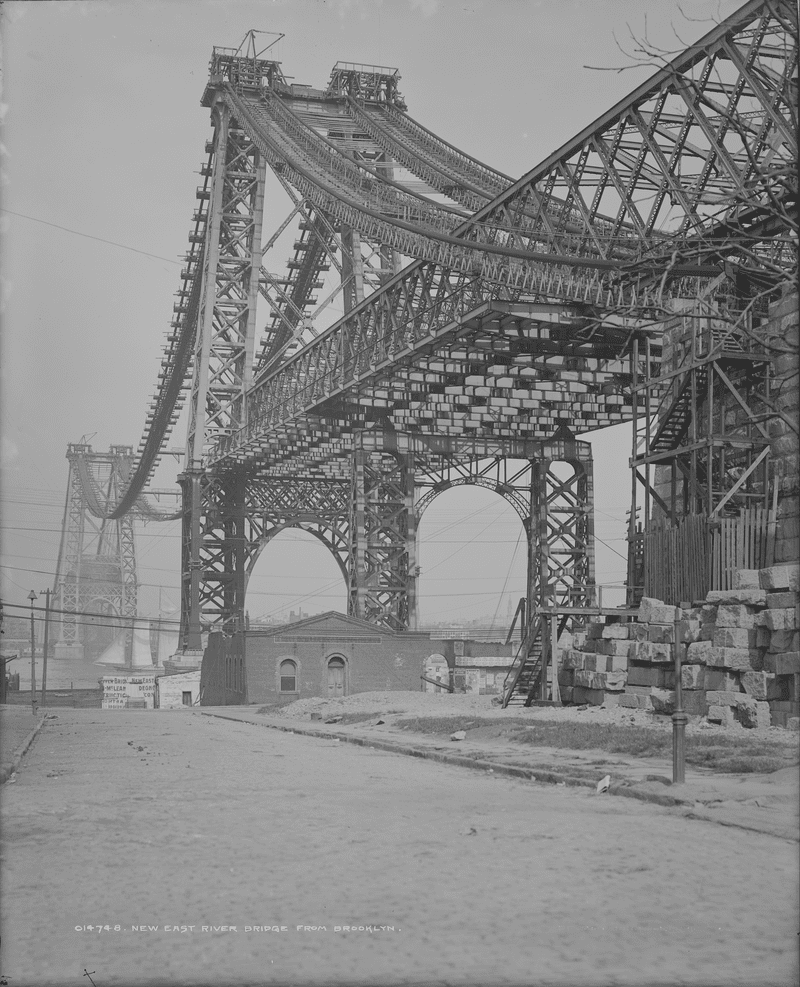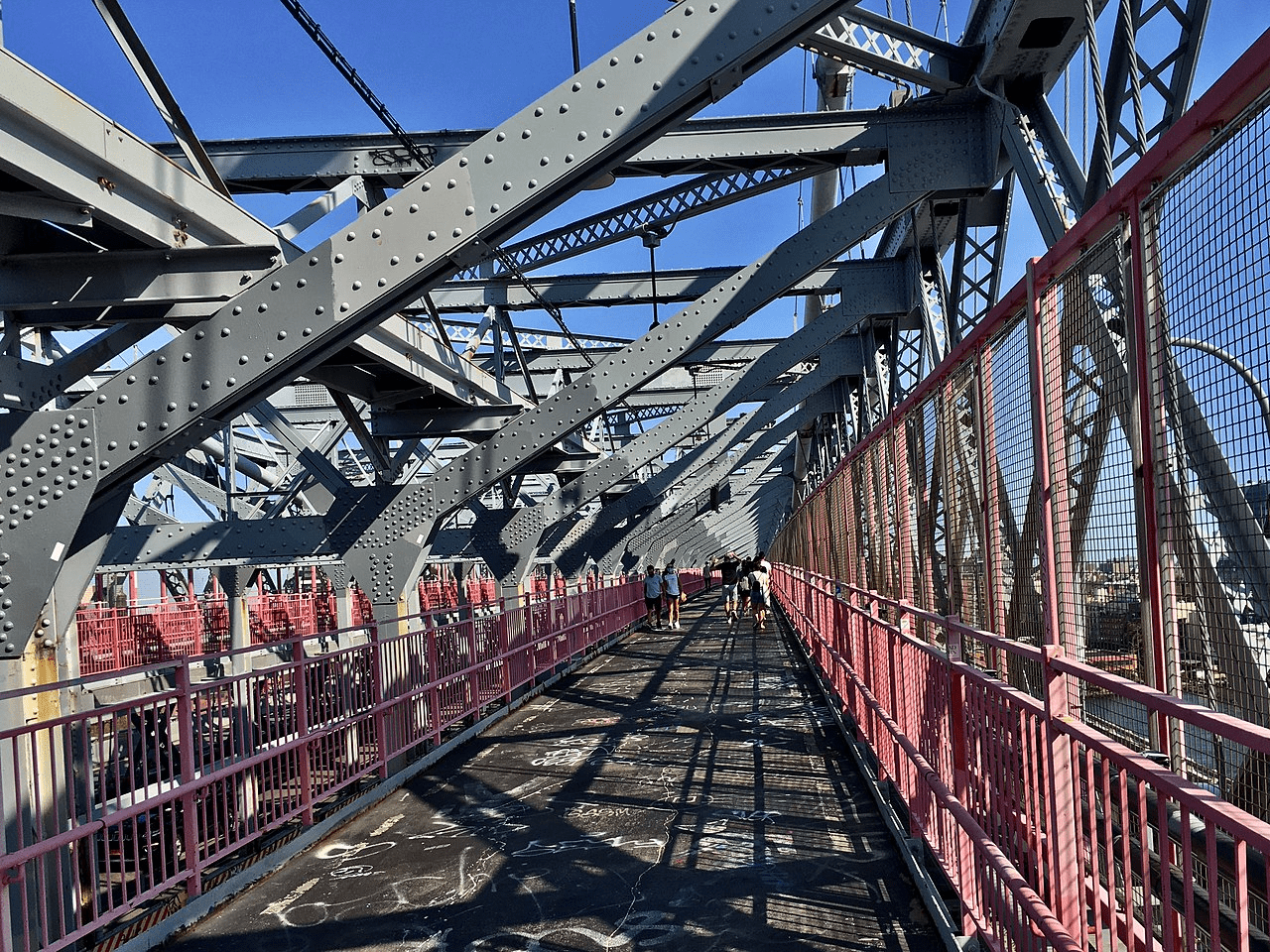This article is about a suspension bridge, which was the longest one worldwide until 1924. Its length is 7,308 feet (2,227 m). Read more about the foundation, construction and additional data on manhattan-future.

Foundation and construction
The Williamsburg Bridge is a suspension bridge over the East River. It connects Manhattan’s Lower East Side with the Williamsburg neighborhood of Brooklyn.
This project was first proposed in January 1892. However, it was not approved until 1895. Leffert Lefferts Buck was appointed chief engineer and Henry Hornbostel was chosen as an architect. The works began on June 19, 1896. There were frequent delays during this period due to lack of funding. To build the bridge, the commissars purchased a lot of land and resettled about 10,000 people. The first caisson was installed in 189. The foundation was completed the following year. Buttresses and bracing were almost complete by early 1900. The hanging towers on both sides of the river were half completed by May 1900. The first wires were ready for installation in February 1901. It began in November 1901. To save money, the wires were not galvanized but coated with oil and graphite, which later caused some problems. Construction of the Brooklyn viaduct began in May 1901. In Manhattan, it started the following month. Then, it was delayed due to a lack of steel.
The bridge opened with parades and fireworks in 1903. Its cost was $11 million. At first, its use was paid. Tram tracks, footpaths and the northern road were opened a little later. In May 1904, the lightning was turned on for the first time. Tram traffic started in 1904, with ground tram terminals at both ends. The underground streetcar terminal was opened in May 1908. In 1936-1949, the trolleybus tracks were replaced with additional carriageways. In the 1980s and 1990s, after the discovery of serious structural defects, it was significantly reconstructed.
On June 22, 2003, a solemn celebration was held in honor of the 100th anniversary of the bridge. In 2009, the American Society of Civil Engineers designated it as a Historic Civil Engineering Landmark.
In 2011, the Manhattan part was rebuilt, installing a concrete barrier. In 2022, reconstruction works began. They should be finished in 2025 and include the replacement of rusted steel beams, pipes, joints, valves, concrete patching, tower repairs, etc.

Some facts
The bridge has a length of 7,308 feet (2,227 m), a width of 118 feet (36 m) and a height of 135 feet (41 m). The main span is 1,600 feet (490 m) long, supported by four main cables, which in turn are suspended from two towers 335 feet (102 m) high. The bridge used approximately 60,000 cubic yards (46,000 m/cu) of concrete, 6.5 million feet (2 million m) of lumber, 130,000 cubic yards (99,000 m/cu) of masonry and at least 40 thousand short tons and 36 thousand long tons of steel. The 118-foot-wide (36 m) bridge deck accommodates eight lanes of traffic, two subway tracks and two pedestrian and bicycle lanes. This bridge is currently one of four toll-free vehicular bridges in this area.